All of Ferrari’s legendary sports prototypes, from 1963 to 2023.
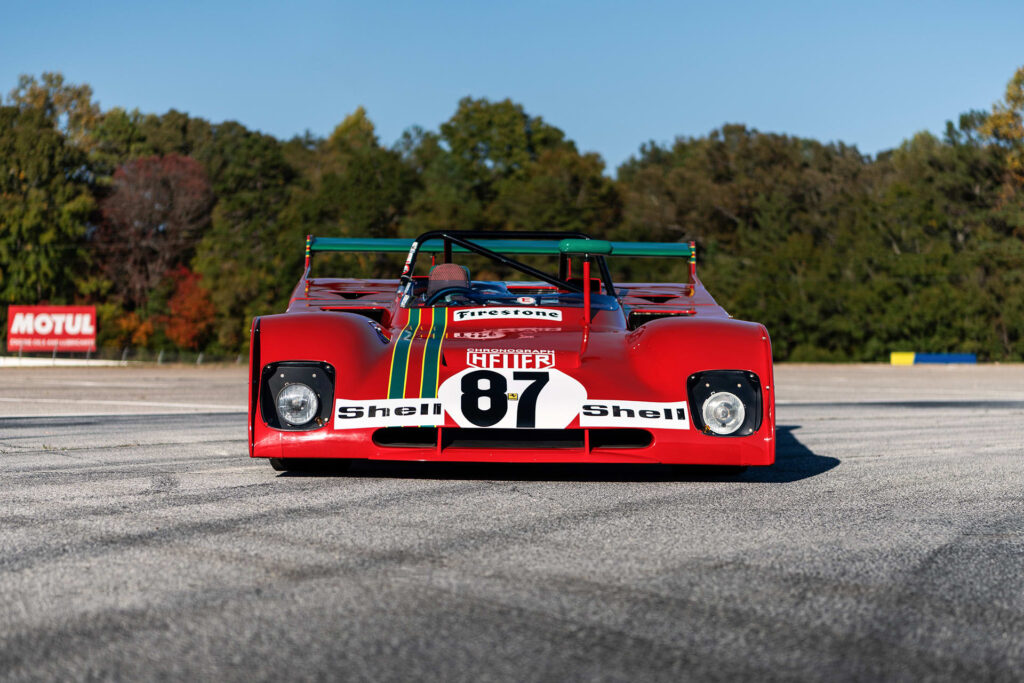
The 11,000 RPM flat-12 powered 312 PB was the most extreme, and dominant of all the P cars, and also my personal favorite.
Ferrari has only recently brought back the “P” moniker for the 499P, which has won Le Mans for Ferrari overall for the first time since 1965. But before that, P (for Prototipo or prototype) designated all of Ferrari’s prototype racers from a decade of wins and championships across many different models. In 1963, the first prototype class was created for cars that had very little resemblance to their road legal counterparts, and Ferrari was immediately the team to beat if you wanted to win the major sportscar races. While this list only includes cars with just the ‘P”, there were many other prototype Ferrari’s like the 248 SP and Dino 206 S, and the iconic 512. It’s unknown why these cars didn’t get the P designation, but Ferrari has never been the most consistent with their naming system. So, here are all fourteen P cars with their specs and most important race results.
1963 250 P
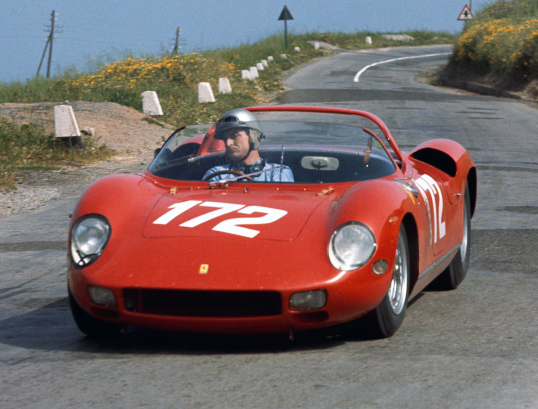
A 250 P at the 1963 Targa Florio. This car, driven by Willy Mairesse and Ludovico Scarfiotti, led the race until it crashed four laps in.
1963 saw the birth of the very first prototype class, and the 250 P was Ferrari’s challenger. Even more importantly it was the first mid-engine car to win Le Mans overall, and mid-engine cars have won every Le Mans since – with the exception of 1980. Mauro Forgheiri was the head of the project, who would oversee development of every P car until Ferrari phased out their sportscar program in 1973. Powered by a mid-mounted 3.0 V12, the 250 P made 310 horsepower. One of it’s most forward-thinking features was using aluminum sheets to strengthen the tube-frame chassis, which worked like a primitive monocoque. The beautiful bodywork was styled by Pininfarina, which was rare for a racing car but it certainly looked the part. It was fast on tight tracks like the Nurburgring and on long ones like Sebring and Le Mans. It won at all of those tracks and more, helping Ferrari crush the opposition in the World Sportscar Championship (WSC). It later became the basis for the rule-bending 250LM, but that’s a different story.
Specs: 3.0 Liter Colombo V12, 310 horsepower, 181 MPH top speed, 1,675 pounds dry weight
Significant race results: Le Mans 1963 overall winner, 1963 Sebring overall winner, 1963 Nürburgring 1000KM overall winner
1964 275 P

This car chassis 0816 won Le Mans overall twice, in 1963 as a 250 P and in 1964 upgraded to a 275 P, the only Ferrari to do so. It also won the Sebring 12 Hours overall in 1964.
A evolution of the 250 P, the 275 P was introduced in 1964 along with the 330 P. The 275 P had a 3.3 liter V12 that was less powerful than the 4.0 liter 330 P, but it was lighter and had better handling. The 275 P was every bit as competitive as the 250 P, and most importantly won Le Mans despite it’s smaller engine compared to the 330 P. The 275 P also raced against the still in-development Ford GT40 at the Nurburgring and Le Mans, and while the early GT40’s were plagued by reliability issues, the Ford’s would soon be their strongest rival. After a very successful 1964 season where Ferrari won all of the major races except the Targa Florio (which they skipped), most of them were sold to customers and six were converted to “lightweight roadster” spec with a lower windshield and a lower or no roll hoop. The roadster spec did not adhere to the FIA’s rules, but as the World Championship was over, most of the remaining races in 1964 were not sanctioned by the FIA.
Specs: 3.3 Liter Colombo V12, 320 horsepower, 185 MPH top speed, 1,664 pounds dry weight
Significant race results: Le Mans 1964 overall winner, 1964 Sebring overall winner, 1964 Nürburgring 1000KM overall winner, 1964 Goodwood Tourist Trophy overall winner
1964 330 P

A 330 P at the Le Mans Classic.
The 330 P was basically identical to the 275 P, except for the larger 4.0 liter V12. The more powerful 330 was intended for longer tracks like Le Mans, although the 275 P took some of the major wins, such as Le Mans and Sebring due to the 330’s either having reliability issues or being unlucky. After the WSC season was over, many of these were converted to the “lightweight roadster” spec like the 275 P’s. Although Ferrari had steamrolled their, they had no serious factory opposition and would soon have to compete against the ever-improving GT40, so they began work on another new car for 1965.
Specs: 4.0 Liter Colombo V12, 370 horsepower, 195 MPH top speed, 1,730 pounds dry weight
Significant race results: 1964 Monthery 1000KM overall winner, 2nd overall Le Mans 1964
1965 275 P2
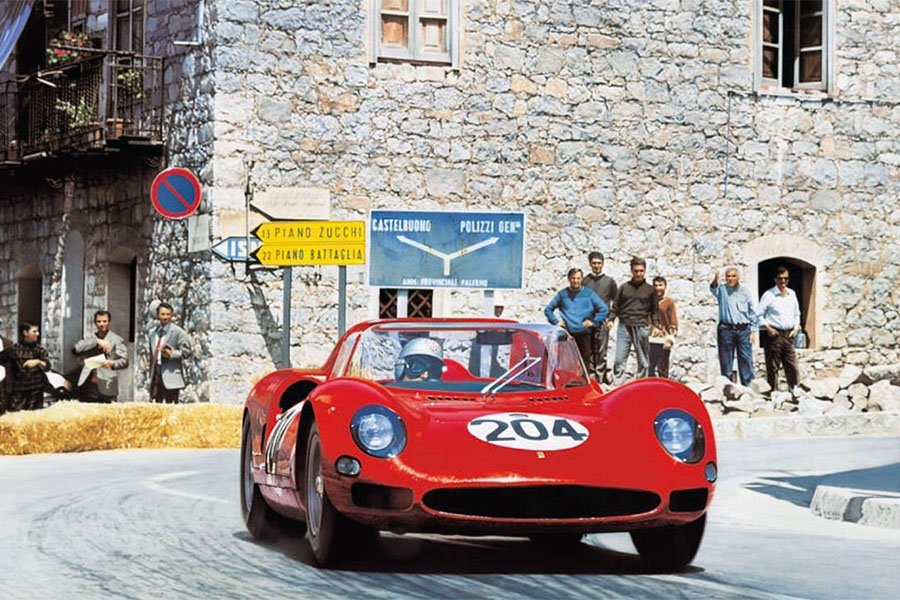
A 275 P2 at the Targa Florio 1965, where a 275 P2 (not the car pictured) won the race driven by Lorenzo Bandini and Targa Florio master Nino Vaccarella.
The new car for 1965 looked similar to the 330 and 275 P, although it was quite a step forward underneath. The 330 and 275 P2 used the same engine sizes but on a brand-new semi-monocoque frame that was lighter and stiffer than before. Unequal-length wishbones were used instead of the old independent suspension, and both the front and rear track were widened. The most notable engine change was the use of dual-overhead cams instead of the single-cam motors from the previous years car. The 275 P2 was at home on tight tracks and won the Targa Florio, but was beaten by it’s more powerful sibling at most of the WSC races with the exception of Monza, where it was strangely faster than the 330 P2.
Specs: 3.3 Liter Colombo V12, 350 horsepower, unknown MPH top speed, 1,741 pounds dry weight
Significant race results: 1965 Targa Florio overall winner, 2nd overall Le Mans 1965, 1965 Monza 1000KM overall winner, 2nd overall Nürburgring 1000KM 1965
1965 330 P2

A 330 P2 at Le Mans 1965, driven by John Surtees and Ludovico Scarfiotti. None of the five P cars that were entered finished, but a 1-2-3 finish from a 250 LM and two 275’s meant Ferrari still had something to be proud of.
The 330 P2 continued the success of the P cars, but it was not quite as dominant as it’s predecessors. The 330 P2 made it’s debut at the 1965 Daytona 2000KM in Lightweight Spider configuration where it was easily the fastest car, but had to retire due to a tire blowout. That race was won by a GT40 which was it’s first race win, but it was still not reliable enough for 24 hours. Despite all of the prototypes sent to Le Mans in 1965, the race was won by a N.A.R.T-entered 250 LM after all of them broke, but it was still a Ferrari 1-2-3 finish thanks to two 275’s. This must have pleased Enzo, who was furious over the FIA’s refusal to homologate the 250 LM as a GT car. But this was the beginning of the end for Ferrari’s years-long winning streak at Le Mans.
Specs: 4.0 Liter Colombo V12, 410 horsepower, 205 MPH top speed, 1,807 pounds dry weight
Significant race results: 1965 Nürburgring 1000KM overall winner
1965 365 P2

The yellow on this Ecurie Francorchamps-entered 365 P2 is a nice change from the red of the Works cars.
While all of the previous P cars were only raced by the Works team in the major races, the 365 P2 was specifically designed to be raced by privateer teams. It was the same car as the 330 P3 except for it’s 4.4 liter V12. The 365 P2 lacked the dual-overhead cams that gave the Works cars an advantage as Ferrari wouldn’t want their customer teams to have a car that could outpace them. The P3’s weren’t as successful as their Works rivals, with the Reims 1000KM being the P3’s only major win. But the most interesting part of the 365 P2’s history was the 365 P Berlinetta Speciale, a supercar based on the 365 P2 that featured a central-seat driving position clothed in Pininfarina-designed bodywork. Only two were built, and not surprisingly they went to two of the most important people in the Ferrari world: Luigi Chinetti, Ferrari’s only North American importer, and Gianni Agnelli, the chairman of Fiat who had owned many bespoke Ferrari’s. The 365 P2 was also upgraded for the 1966 season to near-P3 spec, but these cars didn’t achieve any notable results.
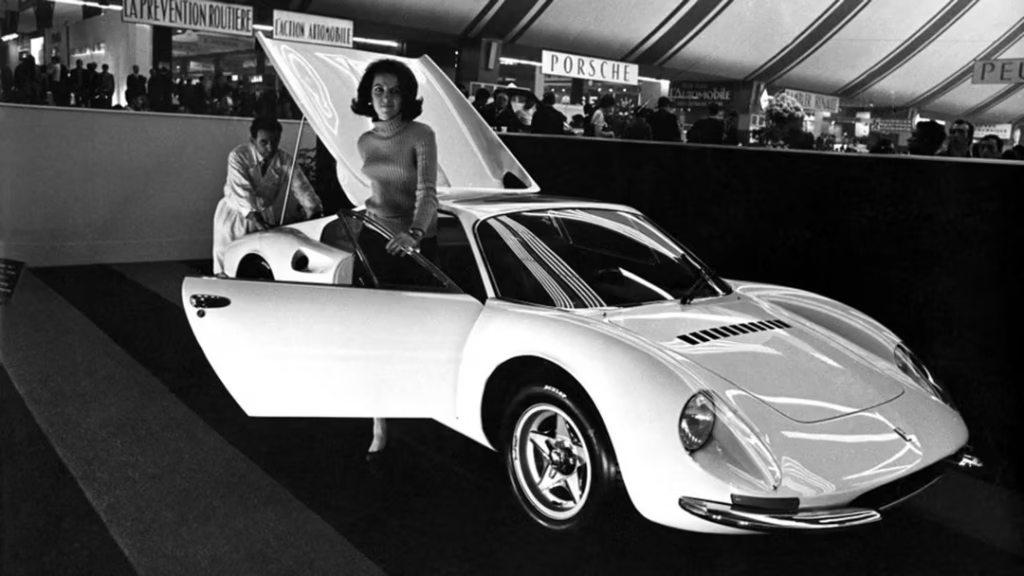
“You didn’t have time to stop before people were immediately around it. But it was fun. It had monstrous acceleration. You just had to get used to the driver’s seat in the middle, because it gave an ideal any reference points to either side, right or left.” – Gianni Agnelli on his 365 P Berlinetta Speciale.
Specs (365 P2 racecar): 4.4 Liter Colombo V12, 374 horsepower, 186 MPH top speed, 2,328 pounds dry weight
Significant race results: 1965 Reims 1000KM overall winner
1966 330 P3
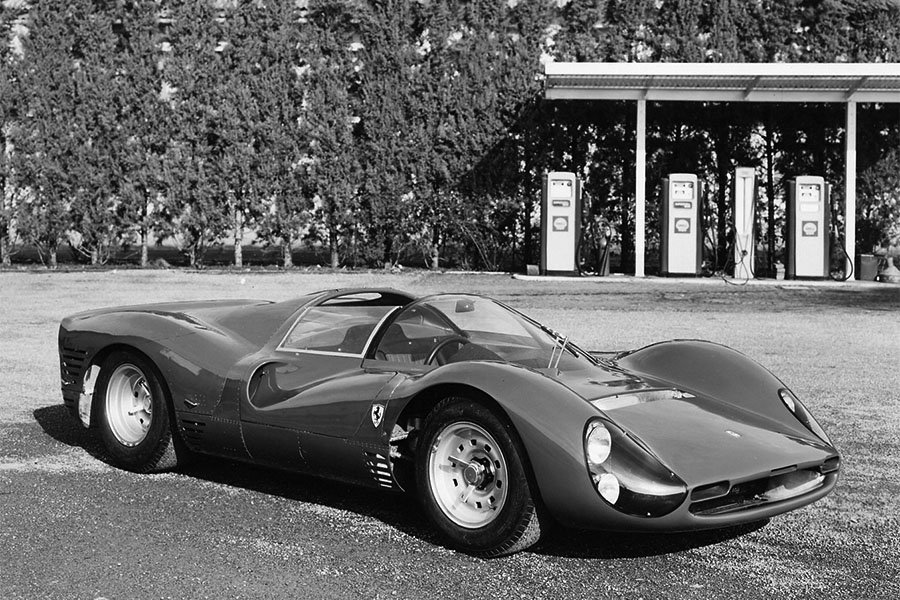
While asking people what the most beautiful racecar ever made would get you many different answers, the 330 P3 or P4 will be a very common one.
By 1966, Ferrari were working hard on their new 3-liter F1 car, so the sportscar program was a much smaller effort than previous years. However, Ferrari created yet another new prototype for 1966: the 330 P3. Thanks to new styling from Piero Drogo, the 330 P3 was inarguably the most beautiful P car so far, looking more like a concept car than any other racecar before or since. Underneath, the 330 P3 was similar to the P2, but it was upgraded with a brand new 5-speed ZF transmission and Lucas fuel injection that increased power to 420 horsepower. The P3’s were also the first P cars raced in coupe form, along with the spider configuration. Ferrari had mixed results for the first couple of races, winning Spa and Monza but losing at Daytona and the Nürburgring. But Le Mans was the most important race, and Ford brought eight 7-liter GT40’s to Le Mans, now quite reliable. 1966 would be a complete change of direction for Ferrari at Le Mans, as Ford finished 1-2-3 and the best placed Ferrari was a 275 GTB in eighth. After being crushed by Ford, Ferrari would be back again with another new car for 1966.
Specs: 4.0 Liter Colombo V12, 420 horsepower, 192 MPH top speed, 1,876 pounds dry weight
Significant race results: 1966 Spa 1000KM overall winner, 1966 Monza 1000KM overall winner
1967 330 P4

The 330 P4 looks surreal anywhere, but especially in this period photo in the fog.
The 330 P4 looked very similar to the 330 P3, but it had several important upgrades, most notably a new V12 designed by Franco Rocchi. The new engine had a three-valve cylinder head that was very similar to their F1 cars, which resulted in 450 horsepower, only 30 less than the GT40’s 7-liter V8. A new 5-speed Ferrari transmission replaced the old ZF, and the suspension was also upgraded. Ferrari’s 1967 season went much better than the previous year, with wins at Daytona, Monza, and Brands Hatch, giving them the World Championship. Le Mans was a intense battle between the 330 P4’s and the new MKIV GT40. Ferrari drove their cars hard to keep up with the immensely powerful Fords and ended up finishing in second and third to a GT40. 1967 would be the end of the current prototype rules, and displacement limits would soon be in place to avoid another 7-liter monster like the GT40. Because the new rules made the 330 P4 obsolete, two were converted for use in the Can-Am championship into the 350 Can-Am, although they were no match for the unlimited-horsepower cars of the series.
Specs: 4.0 Liter V12, 450 horsepower, 192 MPH top speed, 1,746 pounds dry weight
Significant race results: 1967 Daytona 24 Hours overall winner, 1967 Monza 1000KM overall winner, 1967 Brands Hatch BOAC 500 Overall winner, 2nd and 3rd overall at Le Mans 1967
1967 412 P

This 412 P was part of a 1-2-3 Ferrari finish at the 1967 Daytona 24 Hours, which Enzo was so proud of that he supposedly kept a photo of the finish in his office for the rest of his life.
The 330 P3/4 was the name used for the new customer-spec P car, but inside the Ferrari factory it was known as the 412 P – and the name stuck. These cars were actually the 1966 330 P4’s, but with a slightly modified chassis, a V12 that lacked the fuel injection of the Works cars, and a new name. Four were sold, to N.A.R.T, Maranello Concessionaires, Equipe National Belge, and Scuderia Filippnetti. They managed some top-five finishes, but never beat the Works team or Ford.
Specs: 4.0 Liter Colombo V12, 414 horsepower, 192 MPH top speed, 1,840 pounds dry weight
Significant race results: 3rd overall at 1967 Daytona 24 Hours, 3rd overall at 1967 Spa 1000KM, 4th overall at 1967 Monza 1000KM
1969 612 P

The 612 P started out without a wing, but this massive one was added later to to help it keep up with it’s rivals.
You may be surprised to learn that Ferrari ever made a Can-Am car, as the 612 and 712 P have always been obscure compared to other Can-Am cars. But Ferrari did briefly race Can-Am back from 1968 to 1971. Ferrari knew how important the US was for their road car sales, so the decision was made to enter Can-Am. After the previous 350 Can-Am was nowhere near the unlimited-horsepower purpose built Can-Am cars, Ferrari would need to go back to the drawing board. The resulting 612 P was a beast, with a 6.2 liter V12 making more than 640 horsepower. The car was entered by N.A.R.T, and was only ever raced by Chris Amon. The 612 P campaign started out badly, as it crashed out of it’s first race on the first lap. Ferrari weren’t fully committed to the project, and the team was underfinanced. By 1969, the 612 P was more competitive, outqualifying McLaren sometimes but it just wasn’t reliable enough to win.
Specs: 6.2 Liter V12, 640-660 horsepower, 211 MPH top speed, 1,543 pounds dry weight
Significant race results: 2nd at Edmonton Can-Am 1969, 3rd at Watkins Glen Can-Am 1969, 3rd at Mid-Ohio Can-Am 1969
1969 312 P
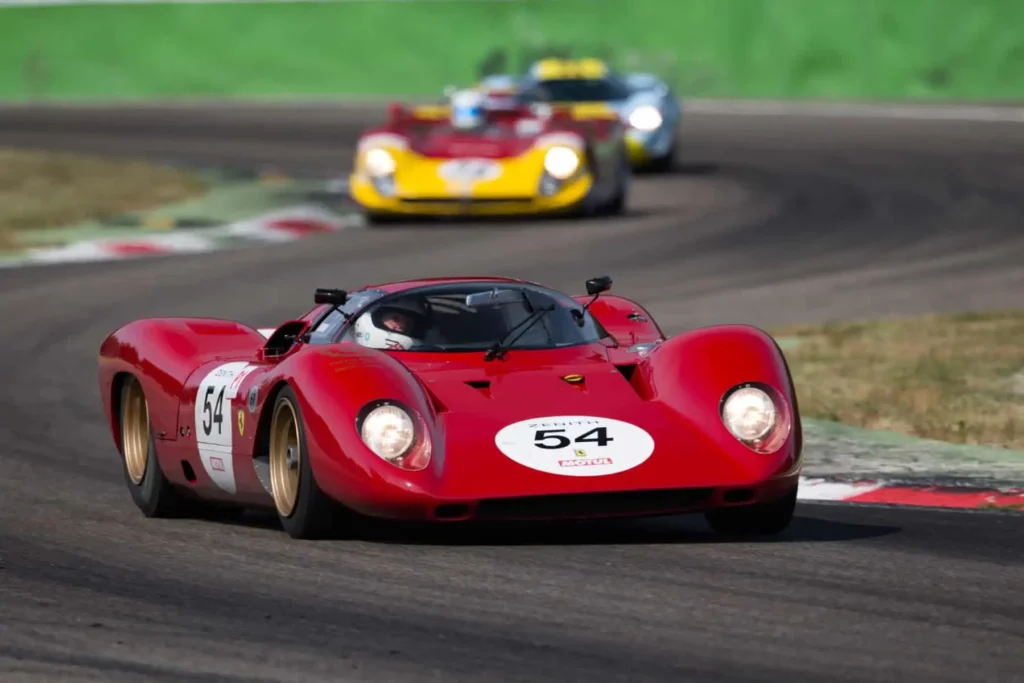
Perhaps the most obvious trait of the 312 P is just how ridiculously low it is.
With 1968 came a new set of prototype rules, and now engine displacement was capped at three liters. The FIA didn’t consult any manufacturers before changing the rules, and many (but especially Ferrari) felt it favored Porsche, who had lots of experience building smaller displacement prototypes. Ferrari didn’t participate in 1968 due to budget concerns and frustration with the new rules. Ironically the 1968 championship was won by the Gulf GT40’s that were raced in the Group 4 category thanks to a loophole. Ferrari’s new car for 1969 was very much an F1 car with sports car bodywork, and the engine was a detuned version of the 312 F1’s V12. The 3.0 liter V12 made 420 horsepower at a screaming 9400 RPM, and it was also a stressed member of the chassis, which was way ahead of it’s time for a sportscar. The 312 P was very quick, and managed several class wins in 1969, although notably not at Le Mans. Porsche was already racing their 917, which was a 5-liter monster that used the same loophole that the Gulf GT40’s had. This meant the the 312 P was very unlikely to win races overall and Ferrari had just been acquired by Fiat, so Ferrari sold the two 312 P’s to N.A.R.T and began work on a 5-liter car to challenge Porsche. The 312 P’s were raced for several more years by N.A.R.T, sometimes with spider bodywork, to some success including a class win at the Daytona 24 Hours.
Specs: 3.0 Liter V12, 420 horsepower, 190 MPH top speed, 1,499 pounds dry weight
Significant race results: 1st in class at Sebring 12 Hours 1969, 2nd overall at Spa 1000KM 1969, 1st in class at Daytona 24 Hours 1970, 1st in class at Daytona 24 Hours 1971, 9th overall at Le Mans 1974
1970 712 P
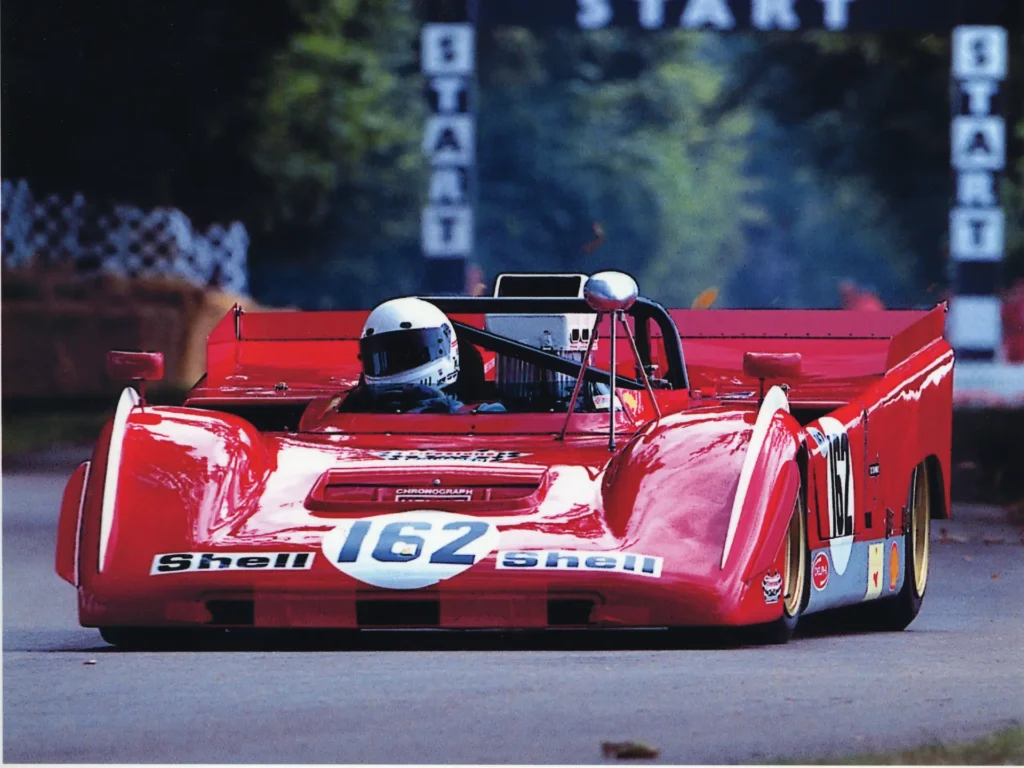
The only 712 P ever made rips up the hill at the Goodwood Festival of Speed. The 712 P has made many historic racing appearances over the years.
The 712 P stands alone for having easily the largest motor Ferrari ever built, a massive 7 liter V12 good for more than 700 horsepower and 740 (!) pound-feet of torque. But the 712 P wasn’t just the 612 P with a larger engine. In fact, the 712 P was based on the 512 M Group 5 prototype, with quite a few changes. It’s Can-Am debut was solid, finishing fourth at Watkins Glen entered by the Works team in the hands of none other than Mario Andretti. But it’s handling wasn’t nearly as developed as it should have been, and later Andretti said it was one of the worst cars he ever drove. It was entered in several more Can-Am races by N.A.R.T between 1971-74 with no significant results, and the 712 P never got the improvements many of it’s drivers thought it needed.
Specs: 7.0 Liter V12, 700 horsepower, unknown MPH top speed, 1,821 pounds wet weight
Significant race results: 4th at Watkins Glen Can-Am 1970, 4th at Road America Can-Am 1972
1971-73 312 PB
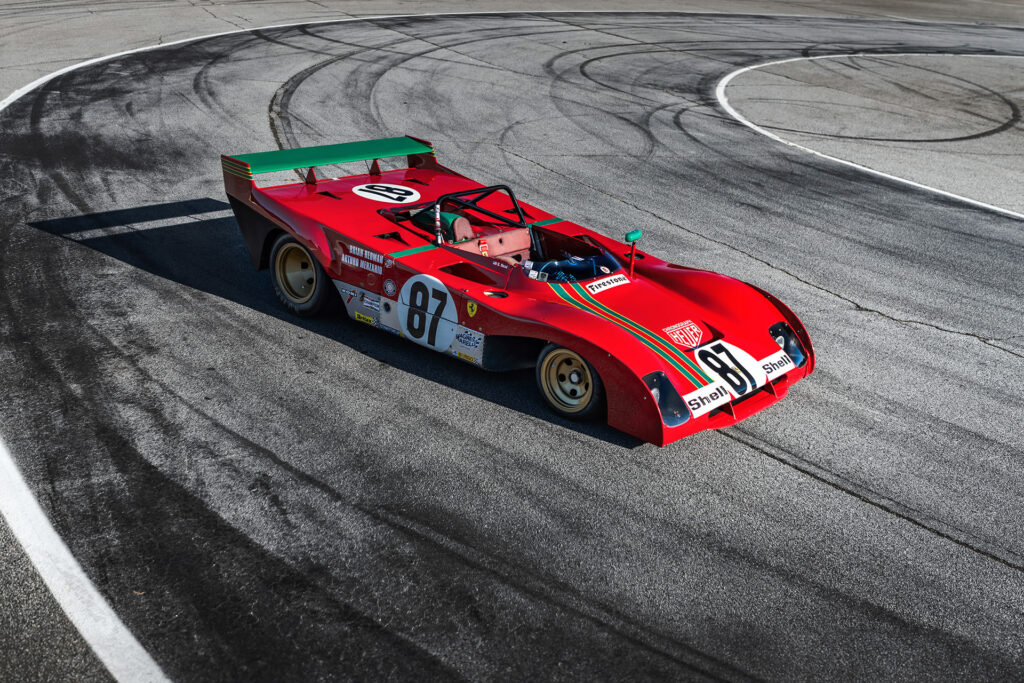
The 312 PB’s radical wedge-like profile was very different from any of the Ferrari’s that came before. It’s 13 World Sportscar Championship wins make it easily the most dominant of the P cars.
After only two years of the rule-exploiting 917 and 512 battling it out in the World Sportscar races, the FIA decided to only allow 3-liter prototypes for the 1972 season. Meanwhile, Ferrari had experimented with a new 3-liter prototype, now powered by the 1971 F1 flat-12 engine. This new car was entered in the 1971 season to prepare for 1972. It was known as the 312 P, but the press called it the PB to differentiate it from the 1969 car. 1971 had some highs, but the 312 also suffered from many reliability issues. Like the 312 P, the 312 PB was basically an F1 car with closed wheels. It was incredibly quick with more than 460 horsepower in a car weighing only 1,400 pounds. By the time 1972 came around, Ferrari was ready to start winning races. But Ferrari (or anyone else) probably wouldn’t have guessed just how many they would win, as the 312 PB won every single race it entered in 1972. From Daytona, to the Targa Florio, to Watkins Glen to the Nürburgring. But Ferrari didn’t enter Le Mans, as they felt that the 312 PB wasn’t built for 24 hour races. Matra, Ferrari’s main rival had significantly upgraded their M670’s for 1973, and they beat the Ferrari’s in most of that year’s races. The 312 PB’s were entered in Le Mans for 1973, despite what Ferrari said the year before, where one finished second and the other two retired.

The wild 312 PB Evoluzione never saw competition thanks to Ferrari deciding to focus only on F1.
Ferrari had planned to continue with the 312 PB for 1974, and the new, very strange looking 312 PB Evoluzione was tested at Fiorano. However, Fiat didn’t want Ferrari to continue, so the sportscar program was scrapped and F1 became Ferrari’s full focus. But no one would have expected that the 312 PB would be the last works Ferrari prototype for 50 years.
Specs: 3.0 liter Flat 12, 460 horsepower, 199 MPH top speed, 1,433 pounds wet weight
Significant race results: 2nd overall at BOAC Brands Hatch 1000KM 1971, 1st and 2nd overall at Kyalami 9 Hours 1971, 1st and 2nd overall at Buenos Aires 1000KM 1972, 1st and 2nd overall at Daytona Continental 6 Hours 1972, 1st and 2nd overall at Sebring 12 hours 1972, 1st overall at BOAC Brands Hatch 1000KM 1972, 1st overall at Monza 1000KM 1972, 1st and 2nd overall at Spa 1000KM 1972. 1st overall at Targa Florio 1972, 1st and 2nd overall at Nürburgring 1000KM 1972, 1st, 2nd, 3rd and 4th overall Zeltweg 1000KM 1972, 1st and 2nd overall at Nürburgring 1000KM 1972, 1st and 2nd overall at Watkins Glen 6 Hours 1972, 2nd and 4th overall at Dijon 1000KM 1973, 1st and 2nd overall at Monza 1000KM 1973, 1st and 2nd overall at Nürburgring 1000KM 1973, 2nd overall at Le Mans 1973, 3rd overall at Zeltweg 1000KM 1973, 2nd overall at Watkins Glen 6 Hours 1973 (Wow that’s an impressive list)
2023 499 P

The 499 P is absolutely stunning, and it has won Le Mans twice in arguably the most competitive era ever.
When the 312 PB was built, traction control, carbon-fiber monocoques, and hybrids didn’t exist. So the fact that the new 499 P has all of those things shows just how long it has been since the last P car was built. The Hypercar era has had a spectacular amount of manufacturers racing, and getting Ferrari to return with a Works team to top-class endurance racing shows just how successful the regulations have been. The 499 P is an LMH (Le Mans Hypercar) built on a bespoke monocoque, instead of an LMP2 monocoque like the LMDH cars. It is powered by a 671 horsepower 3-liter V6 from the Ferrari 296 road car, with an electric motor on the front axle that makes 268 horsepower, although the actual power output depends on the Balance Of Performance at any given race. The 499 P was expected to be a winner, but it won Le Mans the first time out in 2023 in the first overall win for Ferrari since 1965. It won Le Mans again in 2024, beating out cars from Porsche, Toyota, BMW, and many other serious opponents. The 499 P won only one other WEC race in it’s first two seasons, but the 2025 season has gone incredibly well for Ferrari, with three wins in the first three races.
Specs: 3.0 liter V6, 671 horsepower plus 276 horsepower electric motor, 217 MPH top speed, 2,270 pounds wet weight
Significant race results: 3rd overall at Sebring 1000 Miles 2023, 2nd overall at Portimão 6 Hours 2023, 1st overall at Le Mans 24 Hours 2023, 2nd overall at Monza 6 Hours 2023, 3rd at 8 Hours of Bahrain 2023, 1st overall at Le Mans 2024, 1st and 3rd overall at Lone Star Le Mans 2024, 1st, 2nd, and 3rd overall at Qatar 1812 KM 2025, 1st and 4th overall at Imola 6 Hours 2025, 1st and 2nd overall at Spa 6 Hours 2025
Photo Credits: 250 P2: unknown, 275 P2: Girardo & Co 330 P2: unknown 365 P2: Ultimate Car Page 330 P3: Ferrari 330 P4: Ferrari 412 P: Ferrari 312 P: Revs Institute, 612 P: unknown 712 P: RM Sothebys 312 PB: Girardo & Co 312 PB Evo: unknown 499 P: Ferrari